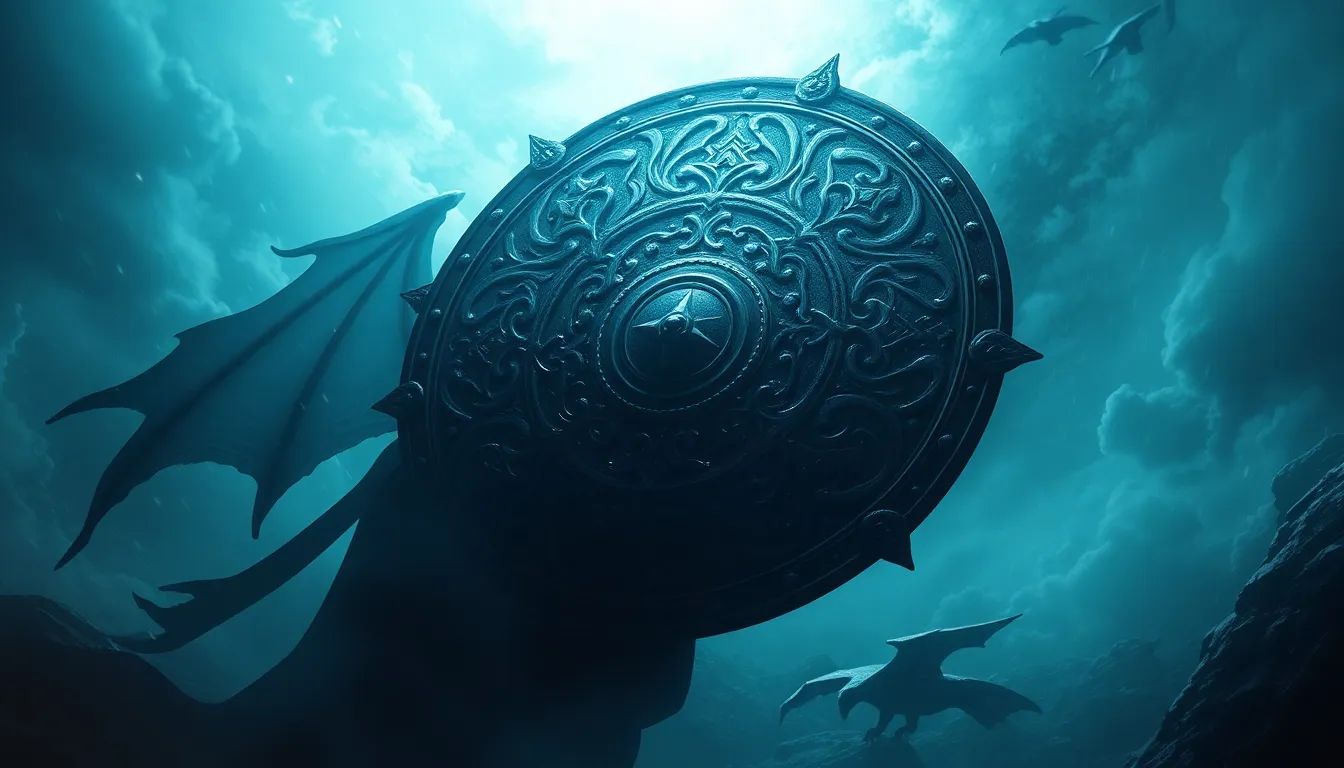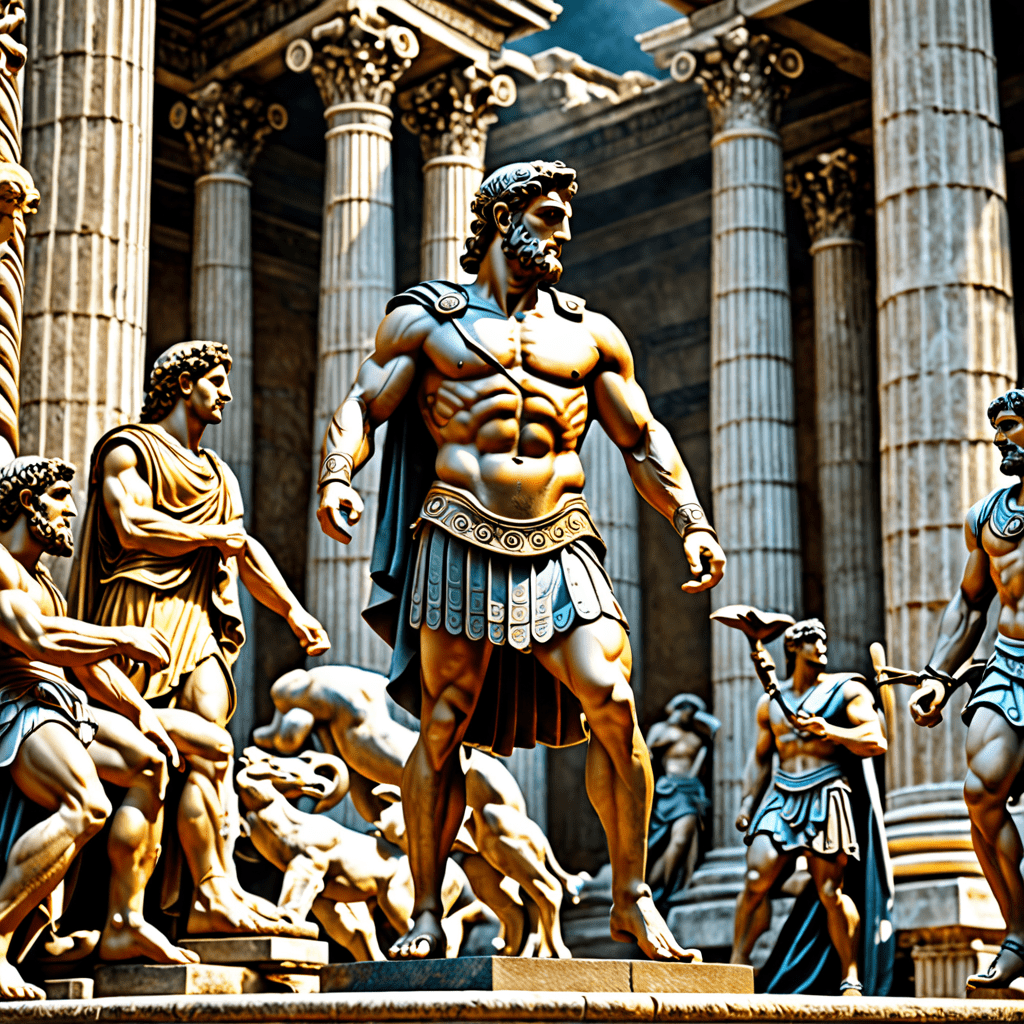The Shield of the Ancients: Legends of Defense
Introduction to The Shield of the Ancients
The Shield of the Ancients represents more than just a physical object; it is a symbol of protection, strength, and heritage across various cultures throughout history. From the battlefields of ancient civilizations to the mythological tales that have shaped human understanding of warfare and defense, shields have held a significant place in our collective consciousness. This article aims to explore the multifaceted role of shields in history, mythology, and modern interpretations, culminating in a reflection on their enduring legacy.
Historical Origins of Defensive Shields
The evolution of shields can be traced back to the earliest human societies, where the need for protection against physical threats prompted the creation of various forms of defensive gear. The historical development of shields can be categorized as follows:
- Primitive Beginnings: Early shields were made from natural materials such as wood, animal hides, and plant fibers.
- Bronze Age Innovations: The introduction of metalwork led to the creation of more durable and effective shields.
- Medieval Advancements: The design of shields became more sophisticated, with various shapes and sizes tailored for specific combat styles.
Throughout these periods, shields were not only used for protection but also served as a means of identification on the battlefield, often adorned with insignias representing one’s clan or nation.
Mythological Interpretations of Shields
In mythology, shields often take on symbolic meanings that reflect the values and beliefs of the cultures that created them. Notable examples include:
- Achilles’ Shield: Described in Homer’s “Iliad,” this shield represents not only physical protection but also the hero’s glory and the eternal nature of life and death.
- Athena’s Aegis: This shield, often depicted with the head of Medusa, symbolizes divine protection and is associated with wisdom and warfare.
These mythological shields embody ideals such as valor, honor, and the struggle between good and evil, reinforcing their importance in storytelling and cultural identity.
Cultural Variations in Shield Design and Usage
Shields have been crafted differently across various cultures, reflecting their unique artistic traditions, materials, and combat styles. Here are key examples:
- Roman Shields: Typically large and oval-shaped, Roman scuta were used by legionaries and featured intricate designs that indicated the unit’s affiliation.
- Viking Shields: Often round and made of wood, these shields were lightweight and designed for mobility in battle, frequently painted with vibrant colors.
- African Shields: Crafted from animal hides and decorated with symbolic patterns, African shields served both defensive and ceremonial purposes.
Craftsmanship and the materials used in shield construction greatly influenced their effectiveness and aesthetic appeal.
Shields as Symbols of Power and Protection
In many societies, shields transcended their practical use and became potent symbols of authority and guardianship. Examples include:
- Royal Shields: Often displayed in ceremonial contexts, these shields represented the sovereignty and power of rulers.
- Ritualistic Shields: Used in various cultures during ceremonies, these shields often carried spiritual significance, believed to invoke protection from deities.
The symbolism of shields has left a lasting mark on cultural heritage, often associated with honor, bravery, and the protection of one’s community.
The Role of Shields in Historical Battles
Throughout history, shields have played pivotal roles in significant battles. For instance:
- The Battle of Marathon (490 BC): The Greek hoplites, with their large round shields, utilized a phalanx formation that proved decisive against the Persian forces.
- The Battle of Hastings (1066): The use of shields in the Norman and Anglo-Saxon armies demonstrated the tactical importance of defensive formations.
Military strategies often revolved around the effective use of shields, showcasing their integral role in warfare.
Legends and Folklore Surrounding Legendary Shields
Famous shields have woven themselves into the fabric of folklore and legend, such as:
- The Shield of Aeneas: In Virgil’s “Aeneid,” this shield is depicted as a divine artifact that showcases the future of Rome.
- Sigurd’s Shield: In Norse mythology, Sigurd’s shield, made from dragon hide, symbolizes invincibility and heroism.
These legendary shields contribute to cultural identity and heritage, often serving as emblems of national pride and historical memory.
Modern Interpretations of Ancient Shields
In contemporary culture, the imagery and concept of ancient shields have been reinterpreted in various forms:
- Art: Modern artists often draw inspiration from the intricate designs of ancient shields, incorporating them into contemporary artwork.
- Literature and Media: Films and books frequently utilize the symbolism of shields to explore themes of protection and conflict.
- Defensive Gear: The principles of ancient shield construction influence modern protective equipment, from riot shields to armor.
These reinterpretations allow ancient shields to maintain relevance in today’s world, connecting the past with the present.
The Psychological Impact of Shields in Warfare
The significance of shields extends beyond their physical attributes; they have a profound psychological impact on warriors:
- Emotional Protection: Shields provide a sense of security and comfort in the chaos of battle.
- Symbol of Identity: Carrying a shield can instill pride and a sense of belonging among warriors.
Furthermore, the concept of the shield has evolved into a metaphor for protection in life, representing the barriers we construct to safeguard our emotional and mental well-being.
Conclusion: The Enduring Legacy of the Shield of the Ancients
The Shield of the Ancients continues to resonate through time, representing more than just a tool for defense. It embodies the values of strength, protection, and cultural identity that have shaped human civilization. From their historical origins and mythological interpretations to their modern representations, shields are a testament to humanity’s enduring quest for security and empowerment. As we reflect on the legends surrounding these ancient artifacts, we recognize their ongoing relevance in contemporary culture, reminding us of the timeless nature of defense and protection.




